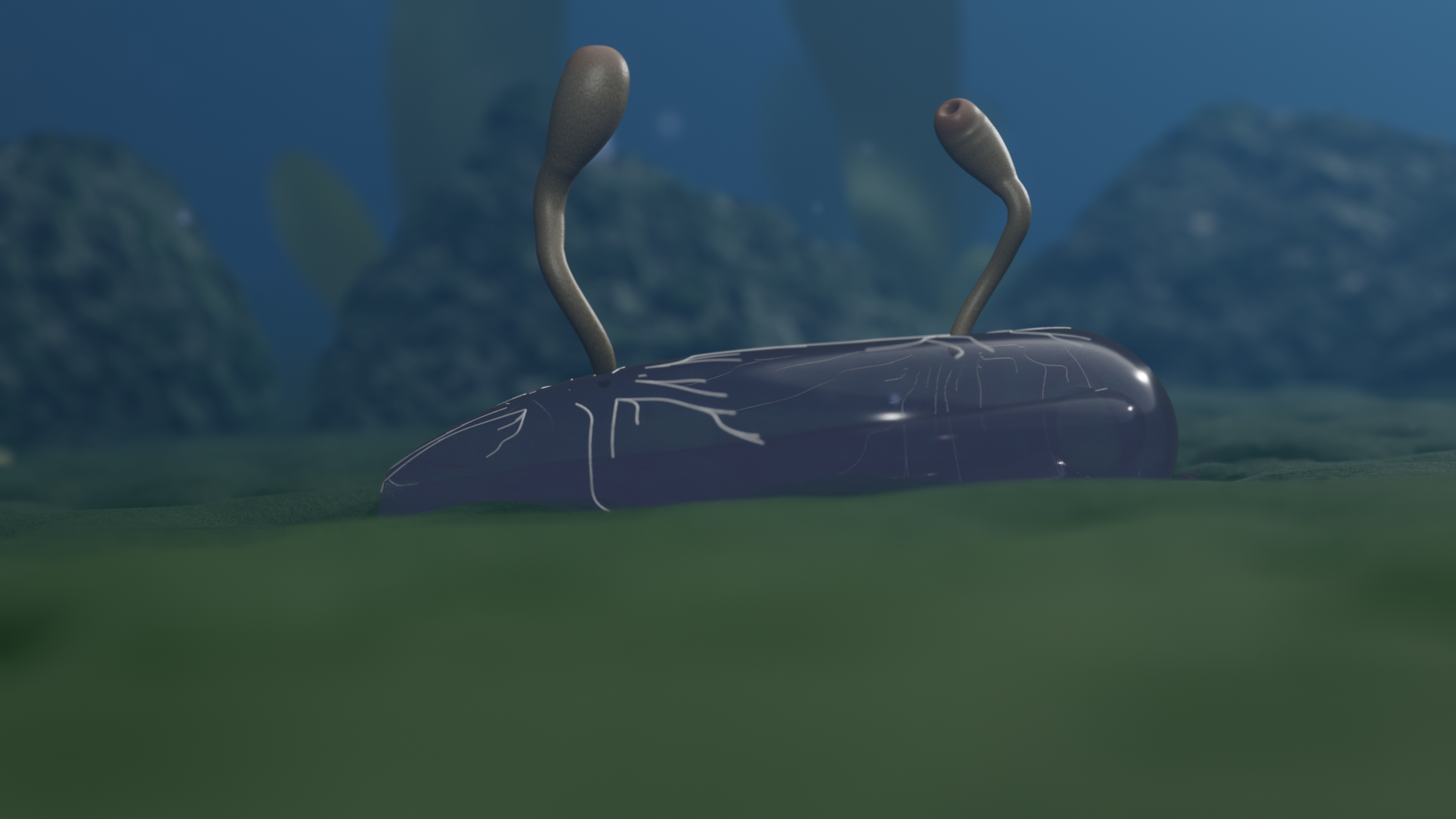Sporspridare
Name means: Spore Spreaders
Their name stems from their reproductive strategy of releasing spores into the oceans. The spores are single-celled organisms that can survive long periods without eating. Once they detect a high concentration of nutrients, they will use their flagella to propel themselves towards the source, typically a corpse of some kind. When they come into contact with the carcass, they will glue themselves onto it and begin to divide. Two structures will thereafter take form. The first is a network of thin white strands that both cover and penetrate the deceased's body. The strands, from now on called mycel, excrete degrading enzymes that break down the carcass, thereby allowing the Sporspridare to absorb the released nutrients. Although a large portion of the nutrients manages to escape the organism, and instead saturates the nearby waters.
This is not a totally undesirable outcome for the Sporspridare since it allows other organisms to flourish and later die, thus providing additional corpses for its offspring. Speaking of offspring, the second structure that Sporspridare creates is a vertical tendril with a bulb on top. It is from the bulb that the organism's gametes are produced and later released. Sporspridare are hermaphroditic, meaning that each individual produces both eggs and sperm, albeit they do not emit both types at once. Instead, they alternate between releasing female gametes and male gametes to avoid inbreeding. If two gametes of the opposite sex meet, they will fuse and develop into a spore, which will, in turn, progress through the cycle once more.
Their name stems from their reproductive strategy of releasing spores into the oceans. The spores are single-celled organisms that can survive long periods without eating. Once they detect a high concentration of nutrients, they will use their flagella to propel themselves towards the source, typically a corpse of some kind. When they come into contact with the carcass, they will glue themselves onto it and begin to divide. Two structures will thereafter take form. The first is a network of thin white strands that both cover and penetrate the deceased's body. The strands, from now on called mycel, excrete degrading enzymes that break down the carcass, thereby allowing the Sporspridare to absorb the released nutrients. Although a large portion of the nutrients manages to escape the organism, and instead saturates the nearby waters.
This is not a totally undesirable outcome for the Sporspridare since it allows other organisms to flourish and later die, thus providing additional corpses for its offspring. Speaking of offspring, the second structure that Sporspridare creates is a vertical tendril with a bulb on top. It is from the bulb that the organism's gametes are produced and later released. Sporspridare are hermaphroditic, meaning that each individual produces both eggs and sperm, albeit they do not emit both types at once. Instead, they alternate between releasing female gametes and male gametes to avoid inbreeding. If two gametes of the opposite sex meet, they will fuse and develop into a spore, which will, in turn, progress through the cycle once more.




Comments